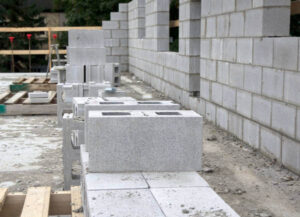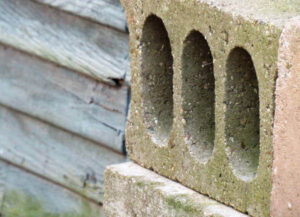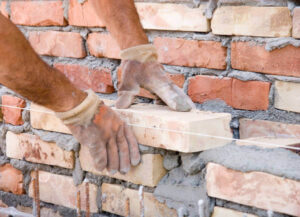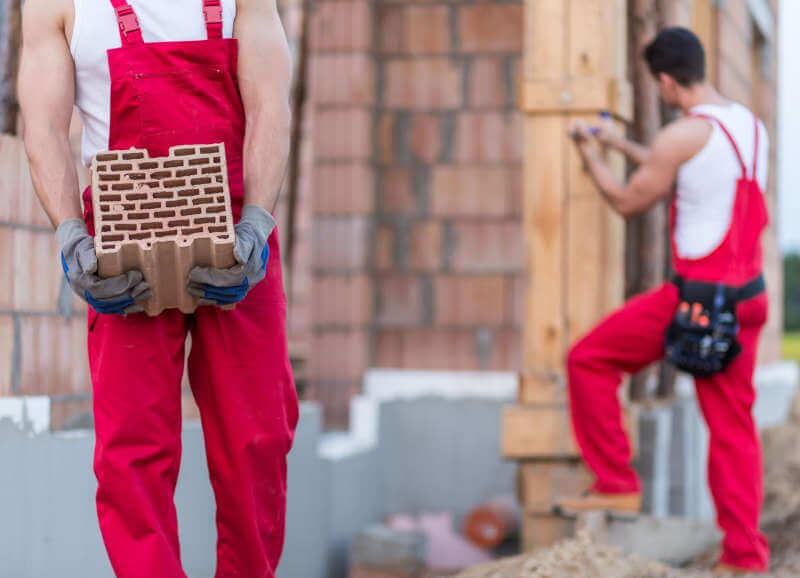A masonry unit is a structural building block made of stone, clay, concrete, or similar materials. Some masonry units have holes in them, while some don’t. Why are there holes in masonry materials?
There are holes in masonry materials to help bind units together creating a more effective and stronger structure. Holes in masonry materials such as brick and concrete can help make the units lighter, easier to manage and transport. They also help with the thermal insulation of masonry structures.
Bricks and concrete blocks are two of the most common masonry units with holes in them. These holes are important design aspects to help with building masonry structures.
Why are there holes in masonry units?
There are holes in masonry units to help lay and bond units while boosting thermal insulation. Modern masonry uses a range of construction materials, the most common including cement, blocks, bricks, and rubble. Most of these masonry units are laid and bound together using mortar. Bricks and blocks are the two most common masonry units that use mortar for binding and also have holes in them. The mortar seeps into the holes in masonry units which helps glue two bricks or blocks together, keeping the structure strong. Without holes in masonry units, it would be harder for the mortar to bind them together.
The holes in masonry units also help with insulation. Thermal insulation is regulated often by the holes in materials such as brick. The brick pores hold heat for a while, slowly releasing warm air over a long period of time. This thermal regulation is only possible because of the holes and pores in the bricks. It is supported by further home insulation, but holes can make masonry units good insulators on their own.
Masonry units can also have holes that are bigger than just pores. These holes help make masonry units lighter and easier to handle. Concrete blocks and many bricks have holes to help carry them around. These holes in masonry units can also help with measurements. Make sure they are being laid evenly with the help of other guidelines such as bricklaying profiles.
Why are there holes in concrete?
There are holes in concrete to make concrete blocks lighter and easier to run connections through. Concrete is one of our strongest construction materials, but solid concrete is very heavy and can be hard to handle. It can also be hard to create openings for piping and other connections in solid concrete.
Holes in concrete help make concrete blocks easier to handle and transport as they become lighter and have a space for you to grab them. The holes can help when using a block and brick carrier, but most importantly, reduce the weight you are lifting. This helps reduce the risk of injury by carrying a lighter weight, while still having the strength and durability of concrete.
The holes in concrete blocks are also helpful when running piping or wiring through a concrete structure. Masons run rebar through holes in concrete to add better stability to the structure.
The holes in concrete units can also be filled with more concrete or grout once they have been lined up. This is another way that masons add strength and reinforcement to a masonry structure. This kind of strengthening is often done at the sides of door openings and large windows.
The concrete blocks used in masonry have two main categories: solid blocks and hollow blocks. Hollow blocks have big holes or openings in them. These concrete blocks are used for building interior or exterior load-bearing walls, partition walls, boundary fences, fire-safe walls, and curtain walls. Hollow concrete blocks are known to have better insulation and soundproofing than solid brick.
Why are bricks made with holes in them?
Bricks are made with holes in them for a few reasons, the main reason being to help mortar set and connect bricks properly. Mortar seeps into the pores and holes in bricks, and then bonds from those holes to the holes of other bricks. In many construction projects, bricks are often turned in a way that conceals the holes in the bricks. When bricklayers fill mortar with quality bricklaying tools, the holes connect the bricks together.
Core holes in bricks are lined up when bricks are laid. These holes can then be filled with concrete to add extra reinforcement to the brick structure. The concrete fills the holes in bricks from top to bottom and dries, creating a concrete pole running through the bricks.
Bricks also have holes in them to reduce their weight, making it easier to lay bricks. Hollow bricks are also easier to transport and easier bricks to manufacture. All these factors make bricks with holes cheaper than solid bricks. They are a more cost-effective masonry unit for many projects, and the holes in bricks can have more advantages than other masonry materials.
There are different types of holes in bricks, but the main two types of holes are frog and core holes. Bricks with frogs are known as frog bricks. They have an indentation on one side, giving them a smoother finish. Bricks with core holes, on the other hand, have three holes.
 Do masonry units need holes in them?
Do masonry units need holes in them?
Not all masonry units need holes in them, but they can help reinforce masonry structures. Masonry units that do have holes in them can have other strengthening reinforcements added. Mortar or concrete can be inserted into the masonry holes, connecting one block to other blocks. This strengthens the masonry structure and adds extra durability.
Masonry materials that do have holes in them are lighter and easier to handle. They are also more common for regular construction projects. Lighter masonry units with holes in them are easier to manufacture in big amounts and transport. So, while masonry units don’t have to come with holes in them, there are many benefits to units that do have holes.
If you enjoyed this article, take a look at our other Paragon resources, including the best brick for home construction guide. For quality bricklaying and masonry tools, check out our Paragon Masonry Tools shop today!



